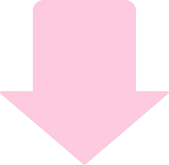This content is for subscribers only. Join for access today.
There is some flexibility in the
EYFS and Key Stage 1
In Key stage 1, we have sequenced the learning to specifically develop pupils’ conceptual understanding of the ‘past’ by first making it relevant to their own lives, then by looking at how life has changed over time in familiar contexts and finally by studying contexts which are likely to be new to them.
EYFS (Reception)
These activities have been designed so that you can use them at any point throughout the year to tie-in with your current theme/topic. The activities help the children to reflect on memories and experiences from their own past and extend only to situations that will still be very familiar to their everyday lives.

Year 1
The ‘How am I making history?’ unit supports pupils to develop an understanding of chronology by looking at their own lives and beginning to build an awareness that timelines extend back before they were born. The second unit, ‘How have toys changed?’ extends this understanding of chronology further into the past (and future) using an object- the teddy bear- which will be familiar to all children to help them develop their concept of time. With a more secure grasp of this concept, pupils are able to look at a context that will be less familiar to them in our ‘How have explorers changed the world?’ unit, which will help them to begin developing an understanding of how the people and events of the past have shaped the world we live in today.

Year 2
‘How was school different in the past?, the first unit in Year 2 gives pupils the chance to look at history through the familiar school context. The second and third units move onto less familiar contexts again, and in doing so, pupils begin to understand historical significance when considering how people and events of the past have impacted society as a whole.
Key stage 2
The National curriculum states that pupils should ‘know and understand the history of these islands as a coherent, chronological narrative, from the earliest times to the present day’, and so our British History units across Key stage 2 are sequenced chronologically to allow pupils to understand this narrative. For world history, The Historical Association states that ‘You don’t have to teach topics in chronological order but need to relate the topics you teach to their chronological context’, and our Kapow Primary timeline allows the teacher to place all units in their chronological context, and in relation to pupils’ prior learning in History.
Year 3
We chose to place ‘What was important to ancient Egyptians?’ at the end of Year 3 as we felt that pupils needed sufficient understanding of the history of the UK before they could compare and make connections with other ancient civilisations.

Year 4
The British History unit comes after ‘How have children’s lives changed?’ in Year 4 because this unit looks at more abstract substantive concepts, such as power, invasion and settlement which are often challenging for children to understand. Finally, children develop a chronological understanding of significant events happening at the same time in other parts of the world by learning about the Maya civilisation.

Year 5
The British History units ‘Were the Vikings raiders, traders or something else?’ and ‘What was life like in Tudor England?’ are taught first, allowing an opportunity to revisit and build on the children’s understanding of the chronology of British history from Year 4. They then move on to comparing Britain to ancient Greece.

Year 6
We have placed the local history unit ‘What can the census tell us about local areas?’ and ‘What was the impact of World War 2 on the people of Britain?’ next to each other so the children can compare local and national issues. ‘Unheard histories’ and ‘What was a Sikh Empire?’ are transition units preparing children for studying history at Key Stage 3, and so either can be taught as the final unit.
